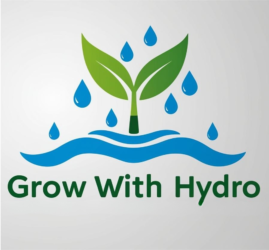Hydroponic gardening is all about growing plants without soil. Instead, it uses nutrient-rich water solutions to provide the essential minerals plants need to thrive. This isn’t just a new wave of gardening; it’s a transformative approach to how we grow plants, especially in urban settings where garden space is scarce.
Contrast that with traditional soil gardening, where dirt is the mainstay. Hydroponics cuts out the mess and the mystery, allowing hobbyists and professionals alike to grow everything from herbs to veggies with less water, often at a faster rate. Think of it as gardening for the modern age, without the mud-stained knees.
This innovative method has roots reaching back centuries, with some saying the Hanging Gardens of Babylon made use of similar principles. But today’s hydroponics taps into cutting-edge tech and science, making it more accessible than ever. Whether you have a green thumb or not, the technology does much of the heavy lifting.
At the heart of hydroponics is the nutrient solution, a carefully crafted cocktail that delivers exactly what plants need: from nitrogen to phosphorus. Understanding these solutions is key to successful hydroponic gardening. It’s like being a chef for plants, mixing up the perfect blend for healthy growth.
Rising Popularity: What’s Driving the Interest in Hydroponics?
Hydroponic gardening is catching on, and fast. Various factors are fueling its popularity, starting with the tight squeeze on space. In urban areas, where green patches are hard to find, hydroponics turns balconies and kitchens into green havens. It’s all about making the most of what you’ve got.
Sustainability is another big pull. As we become more aware of environmental impact, folks are turning to gardening methods that use less water and cause less harm. Hydroponics rises to the occasion—it slashes water usage and fits nicely into the eco-friendly lifestyle many aim for today.
The tech boom has turbocharged interest too. With more gadgets and gizmos tailored for home growers, hydroponics is easier than ever to dive into. Beginners manage mini farms with user-friendly apps and systems that guide you from seed to harvest.
Growing your own food hits home with a lot of people, and with hydroponics, getting fresh, organic produce is within reach. Whether it’s lush greens or ripe tomatoes, knowing exactly what’s on your plate provides a satisfaction few other gardening methods offer.
Benefits of Hydroponic Gardening: More Than Just a Trend
Hydroponics promises water savings—a massive win for sustainability. Plants get exactly what they need, meaning no wasted water. In drought-prone areas or places with limited resources, this is a game-changer.
With hydroponics, you can look forward to faster growth and richer yields. Since the nutrients are all dialed in, plants can focus on what they do best: growing. Imagine fresh veggies in weeks rather than months.
Pests and soil-borne diseases often wreck your gardening plans, but hydroponics reduces these risks. Without soil, many of these issues just don’t stand a chance. It’s less about crisis management and more about nurturing growth.
The flexibility of hydroponics is unmatched. Whether you’re in a tiny apartment or a sprawling mansion, systems can scale to fit your space. From small herb gardens on your kitchen counter to larger operations, the limits are yours to set.
Starting Your Hydroponic Journey: Tips for Beginners
Getting into hydroponics doesn’t have to be daunting. Picking up the basics starts with the right gear. You’ll need a setup that suits your space and ambitions, whether that’s a simple DIY kit or a more advanced system. Research what’s out there and what aligns with your goals. Check out our articles on the Kratky Method, Deep Water Culture and Ebb and Flow setups.
Choosing suitable plants is crucial. Some thrive better in hydroponic setups than others. Leafy greens like lettuce or spinach are beginner-friendly and often forgiving, a great start before moving on to more demanding crops.
Take time to troubleshoot common challenges like pH balance and nutrient levels. Don’t let initial hiccups bring you down. Many beginners face a learning curve, but resources and community support can guide you through.
Long-term sustainability keeps your hydroponic system thriving. Regular maintenance, from cleaning equipment to adjusting nutrient solutions, ensures your plants stay healthy and productive. Over time, refining your approach will become second nature, making your home or apartment a personal food oasis.
